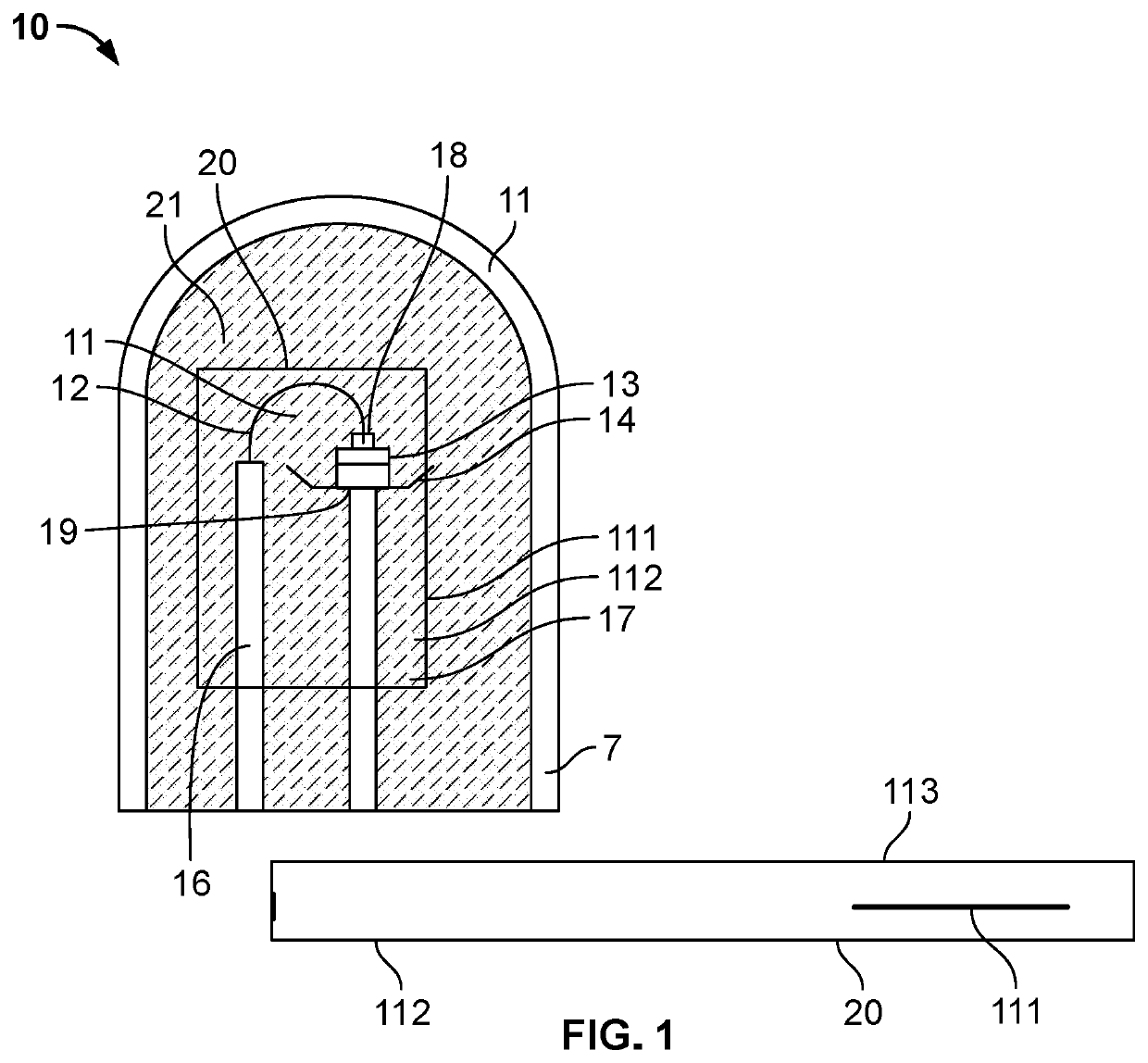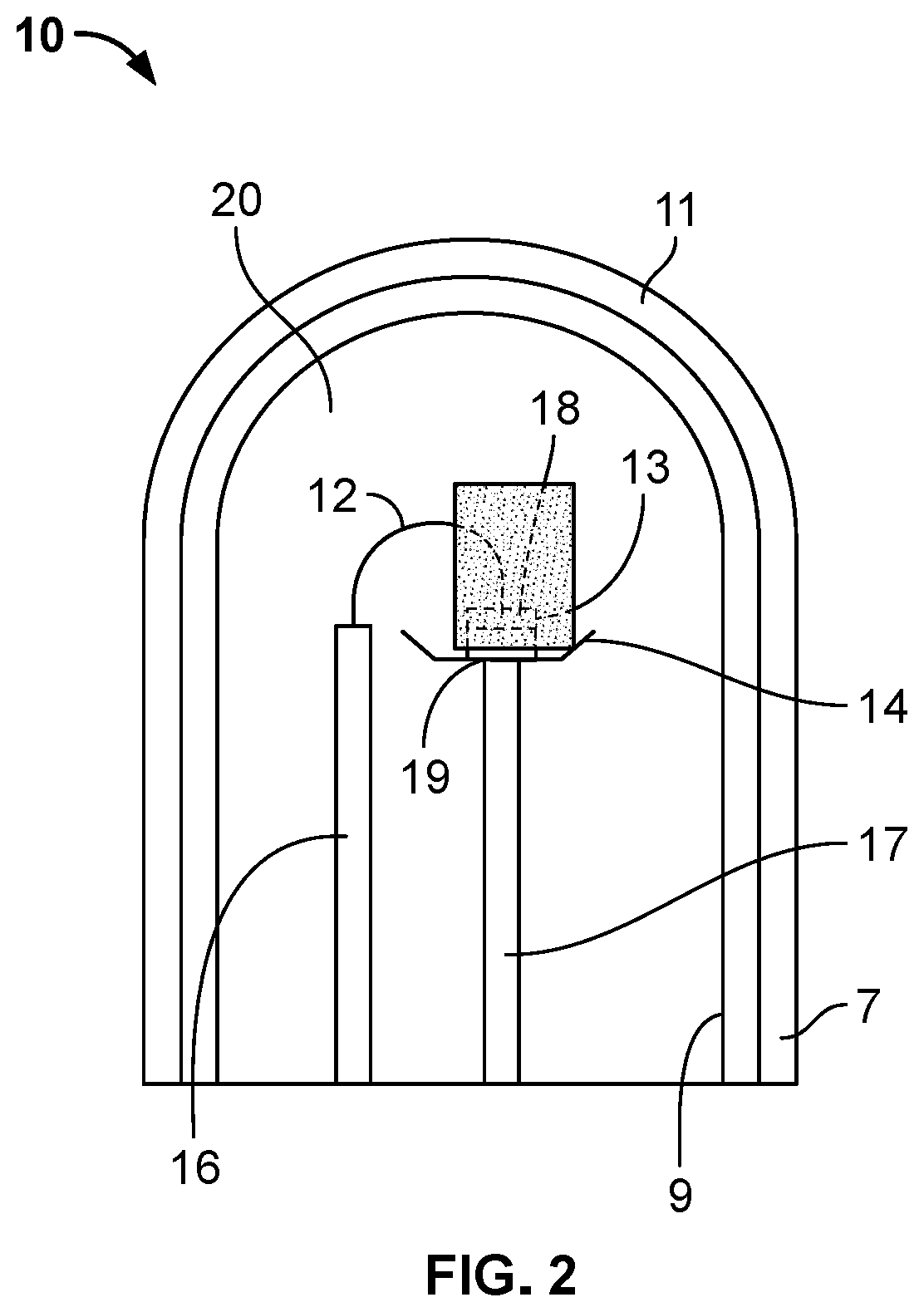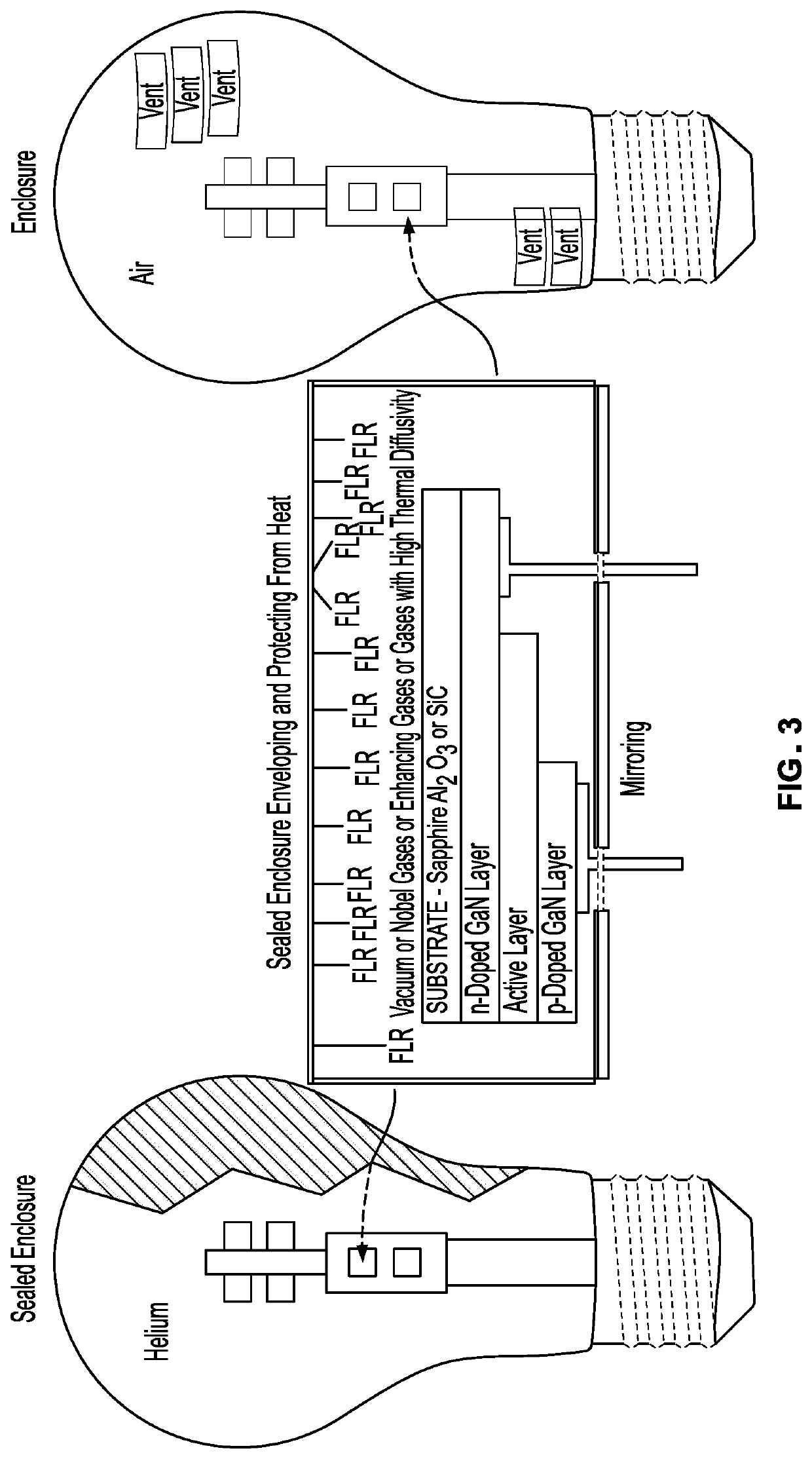The inventor's lighting device could not really be used yet because the filament burned up too quickly.
Unfortunately, the device was still not entirely practical, at the time of the announcement, because of the
short life of the filament.
Despite all of the great inventions for general illumination that preceded Edison, the practicality of functional general illumination remained illusive; Edison believed early on that, regardless of which material worked best, the filament is obliged to be contained in a vacuum.
Osmium is an element however that was expensive alternatives to which were under study.
The
brittleness and lack of
ductility of
tungsten prevented their attaining success by this method, although later, in 1913-1914, it was demonstrated that fused
tungsten could be rolled and drawn at very high temperatures, using very small reduction steps.
The use of
nitrogen atmosphere in a
tungsten filament lamp was novel to
Langmuir; the introduction of
nitrogen in a carbon-filament lamp of earlier incandescent lighting generations was previously suggested and was a failure according to
Langmuir since he claimed at the temperatures at which the carbon filament found itself—when providing illumination—were such that carbon and
nitrogen could react to form cyanogens and paracyanogen.
Note only does a brown
powder of “paracyanogen” form on the surface of the
bulb effectively reducing luminance emanating there from, but the reaction also weakens the carbon filament reducing the operational burn time of the incandescent lamp.
But as noted the gas also conducts heat—this permits energy to exit the filament by means other than radiation so this is a non-radiative loss.
As it turns out,
argon and the
argon-nitrogen mixture are not the best.
Due to all of this, both material and process,
halogen products are more costly to manufacture.
First, deposition of the evaporated tungsten on the
bulb wall builds up a film of increasing
opacity which absorbs increasing portions of the light produced by the filament and thus reduces the total light output.
(1) The filament, fill gas, and
bulb are initially at some low temperature (e.g., ambient, for a
cold start).
(2) When power is applied, the filament rapidly rises to its
operating temperature (2800K to 3400K depending on application), heating the fill gas and the bulb. The bulb wall rises to an
operating temperature of 400° C. to 1000° C., and the fill gas rises to temperatures
ranging from that at the filament to that at the bulb wall. This
temperature gradient causes
convection currents in the fill gas.
(3) As the bulb wall rises above temperatures in the range 200° C. to 250° C. (depending on nature and amount of
halogen vapor), the
halogen cycle begins to operate.
Tungsten molecules evaporated (more accurately sublimed) from the filament combine with the halogen vapor to form a tungsten
halide (e.g., tungsten
iodide or tungsten
bromide). The
halide does not condense on the hot wall of the bulb but is circulated by
convection back to the region of the filament.
(4) At the filament where the temperature exceeds 2500° C., the tungsten
halide dissociates, the tungsten is deposited on the filament. The free halogen vapor is recirculated to continue the
regenerative cycle. This cycle thus keeps the bulb wall clean by preventing deposition of tungsten and results in much higher
lumen maintenance over the life of the lamp than that obtained for conventional tungsten-filament lamps.
Peter Cooper Hewitt began developing mercury-filled tubes in the late 1890s, and found that they gave off an unappealing bluish-
green light.
The amount of light, however, was startling.
Ultimately, Cooper Hewitt lamps proved cumbersome to use.
These lamps had a practical
disadvantage that the lamps were over 250 feet in length.
As a result, the impractical Moore lamp soon disappeared from the market for general illumination.
This lamp used a tiny fraction of the mercury needed for Cooper Hewitt lamps, had a screw base, and gave 40 lumens per
watt, though its color was still poor.
In practice, however, the use of these
rhodamine coloring materials has not found favor since it has been found in practical use that they lose their fluorescent properties within a short time.” (N. V. Philips Gloeiampenfabrieken, Great Britain Patent number GB454348, issued date Sep. 29, 1936) This represents an early discussion of the degradation of down-conversion luminophors in non-solid-state lamp technology.
Despite the extensive innovations using
rhodamine, an organic fluorescent dye, it is not utilized in
present day lighting as it has not yet been found a means to stabilize the
rhodamine under the conditions of
high luminance in an operating lamp, regardless of whether the lamp is a
mercury vapor lamp or any other lamp.
But until the early 1990's, notwithstanding the outstanding and well recognized achievements of Holonyak, Craford and Dupuis, and the legions of researchers advancing the art in academics, government laboratories and commercial enterprises, commercial LEDs have produced light only in the red, green or amber ranges and have not been generally suitable for replacing, for example, incandescent bulbs, with normally a white
luminescence, in a wide variety of display applications.
At least three major problems had to be solved for GaNs to succeed: (i) the lack of suitable lattice-matched epitaxial substrates, (ii) thermal
convection problems due to the very high growth temperatures (about 1000° C.
A long-standing problem was the failure to achieve p-type
doping in GaN materials.
1936-1938) These very short lifetimes are difficult to purposely quench although trap states have been suggested to lead to yellow not blue or uv luminescence otherwise observed in GaN devices.
Given the desirability of solid-state white lights for general illumination and for displays, considerable effort has been expended to produce
white light LEDs.
The multiple LEDs would be then incorporated into complicated and expensive LED modules to obtain the required
broadband illumination necessary to provide
white light.
When the ratio is comparatively large at 1 / 100 to 1 / 200, the color is a white color.” These single die GaN complex doped devices failed to perform favorably for the generation of white light illumination.
Hence, defining light in terms of colors is extremely problematic.
The problem that has not been heretofore recognized is that with fast rates of luminescence from the excited states, these excited states can not absorb a secondary
photon, assuming of course that the absorption spectrum of the first
excited state of the down converting luminophor overlaps the spectral characteristics of the primary radiation.
Nevertheless, the primary radiation is partially emitted (incomplete absorption of the primary radiation) and hence the
color rendering index is not optimal.
Unfortunately, most
ceramic phosphors that are said to be excited by uv radiation do not absorb substantively between 340 nm through 390 nm although many are known that absorb uv light from a
mercury vapor lamp.
As noted earlier, the major challenge for ceramic phosphors utilized in LED
down conversion is that the
light emission—the primary radiation—from the diode die are narrow, usually singular in range and of wavelengths of considerably lower energy than that absorbed by CRT and
fluorescent lamp phosphors and that the narrow emission profile from the p-n junction has poor overlap with the
excitation spectra of the ceramic phosphors required to effect down conversion.
Phosphorescence therefore is not expected to be a beneficial phenomenon in systems where quenchers, such as water and or
oxygen may exist, unless there is a mechanism for speeding the rate of change in spin multiplicity.
It is an undesirable element in that the
ultraviolet light emanating from the
semiconductor light may be a safety
hazard to the observers of the white light.
Hence the specification of Reeh et. al. is difficult to practice since radiative
energy transfer, by definition absorbs—does not transmit—photons of the primary radiation range thereby altering quantitatively and qualitatively the primary radiation range.
For example, one report in 1997 states “Single white LEDs were not feasible to date, as they emit monochromatic light only.
However, the most important reason not to prefer blue to uv light for the LED is that the
blue light from the LED die will inevitably contribute substantively to the
chromaticity of the intended achromatic light therefore making the light not achromatic.
. . ” Since achromatic light has no hue, the patent does not teach to achromatic light.
However, the volumetric accuracy is typically unsatisfactory due in part to the
settling of the
phosphor within the solution.
Another
disadvantage is a result of the process of mixing
phosphor compounds with an optically-clear substance, such as, for example a clear
epoxy resin.
It is difficult to achieve and duplicate a uniform mixture of the
phosphor compound particles in the optically-clear substance.
This difficulty results in a less than desirable uniformity of the
light emission from the lighting device.
Regardless of the adjustment of additional phosphors including red emission phosphors to adjust the
color temperature of
blue light emitting diodes with yellow phosphor, this
system has one fundamental and significant problem: the number of blue photons emanating there from is far greater than the relative number of blue photons in the photopic curve.
In other words, the photons being generated are not useful in terms of
luminous intensity; this means that the light is not productive for general illumination.
The
luminous intensity could increase dramatically if the blue photons were substantively adjusted to green photons (near the photopic maximum); heretofore, it has not been successful to dramatically reduce the blue component and to generate a spectral light mimicking the photopic curve using a blue LED die and a complementary yellow phosphor.
This is a fundamental problem that will always
impact the magnitude of brilliance of white LEDs based on blue die and yellow complementary phosphors.
In contrast let us note, “The
quantum deficit between the UV pump and the phosphors, especially the low-energy red phosphor, dissipates significant energy and makes this approach inherently less efficient than either the red, green and blue LED-dice or the phosphor conversion using a blue LED and yellow phosphor emitter schemes for generating white light.” (D. A. Stiegerwald, et. al., “Illumination With
Solid State Lighting Technology”, IEEE JOURNAL ON SELECTED TOPICS IN
QUANTUM ELECTRONICS, VOL.
Therein they state “In addition to this somewhat limited
emission intensity, the color output of such an LED-phosphor
system varies greatly due to frequent, unavoidable routine deviations from desired parameters (i.e. manufacturing systemic errors) during the production of the light.
Unfortunately, the thickness of the phosphor layer is difficult to control during large scale production of LED-phosphor lamp systems, and the variations in phosphor thickness often result in relatively poor lamp to lamp color control.
The challenge in utilizing ceramic phosphors for the generation of achromatic white light (light without hue) is formidable at best and most difficult and expensive at worst and has led to extremely complicated mixtures of ceramic phosphors to effect achromatic white light.
Even when a broadly used single ceramic phosphor is available, ultimate performance is compromised.
LED is that the “white” output light has an undesirable
color balance for a true color rendition.
However, for applications in which a
high color rendition is desired, the output light is deficient in the red region of the visible
light spectrum (647-700 nm range).
As one skilled in the art would appreciate, the discovery of new
inorganic materials for specific luminescent applications—especially those amenable to their use in the manufacture of consistent and high quality
light emitting diode lamps—is a challenge.
The preparation and discovery of new
solid state inorganic compounds is limited by the lack of a general framework that provides broad based predictive synthetic strategies and theories.
Due to the lack of predictive tools available to the solid state
inorganic chemist, the preparation of new phosphors has generally been restricted to serial synthesis and analysis techniques.
At the same time, efforts to predict basic solid state properties from theory, including intrinsic or extrinsic luminescent efficiency, have been unsuccessful (see, DiSalvo, Science, 247:649 (1990)).
Combinatorial techniques have been helpful (see U.S. Pat. No. 6,315,923 “Storage phosphors”; U.S. Pat. No. 6,203,726 “
Phosphor Materials” and U.S. Pat. No. 6,013,199 “
Phosphor materials”) but the challenge and cost associated with complex combinatorial ceramics is formidable.
However, the
room temperature photo-stability in these systems is not suitable for many applications based on the luminescence.
In many cases, the “leakage” results from bimolecular events—aggregation;
excimer formation is energetically favorable but leads to alternative reactions, non-radiative decay and generally lower yields of radiative decay (luminescence).
Not withstanding the progress made in using organic fluorescers or ceramic phosphors as down-conversion luminescent elements, the current state of the art finds it difficult to generate achromatic light or chromatic light using down-conversion with reasonable operational lifetimes.
What ceramic phosphors
gain—in theory—from the perspective of stability, they lose from the standpoint of performance.
Ceramic phosphors in general have two major limitations: they are not soluble in the matrix that envelopes the
light emitting diode die and the ability of ceramic phosphors to mimic the photopic
light curve has been fraught with challenges.
In contrast, Butterwoth notes that ceramic phosphors are not soluble in the
epoxy lens used to focus light emitting diode die and substantial scattering occurs.
Further, the advantages of placing the luminescent element in a media other than the
epoxy polymer or a similar
silicon polymer enveloping a light emitting diode has generally not been appreciated.
Despite the robust characteristics of
inorganic materials versus their organic counterparts, even ceramic phosphors are known to degrade due to
moisture and other factors due to
environmental exposure, although these problems are more likely recognized by applications of ceramic phosphors exposed to the environment.
Examples are phosphorescent phosphors,
sulfide phosphorescent phosphors, which are very well known and since they have extremely long radiative lifetimes, are prone to
quenching.
However, any of these
sulfide phosphorescent phosphors are chemically unstable and shows degraded light resistance, i.e., it suffers from problems that must be solved for practical use.
Therefore, it is difficult to use this phosphorescent phosphor in fields where it is placed outdoors and exposed to a direct
sunlight, that is, application thereof is limited to luminous clocks / watches or clocks / watches and instrument dials, evacuation guiding signs or indoor night-time display.
However, the phosphorescent behavior of the phosphor
system causes it to continue to glow for a period of time after being excited.
While ingenuous in conception, the method may not be practicable in implementation as described to generate a level emission of light.
But the true challenge in working with
xenon as a
discharge medium is finding phosphors that efficiently convert the ultraviolet output of
xenon into visible light.
Since red, green and blue photons are much less energetic than ultraviolet photons, a considerable mismatch of energy is associated with most phosphors.
In all phosphor materials known until now, this energy mismatch has led to non-radiative decays of the luminescent element or
ion (once the energy had been transferred radiatively from the primary radiation to the luminescent elements).
Energy mismatch has therefore been an unavoidable, inefficient use of the electrical excitation energy in fluorescent lighting.
If the transfer of energy occurred simply between one
gadolinium ion and one
europium ion, (non-radiative
energy transfer) the phosphor would suffer from a significant energy-mismatch problem and would have low efficiency.
For many years, lighting manufacturers have tried to eliminate electrodes in
fluorescent lamp operation because the emission
coating on the electrodes at each end of a linear lamp deplete over time, which is a major cause of lamp failure and a barrier to longer lamp life.
However, an induction lamp is not a solid-state lamp as any one can plainly see and all of the benefits of a solid-state lamp are not available in an induction lamp.
 Login to View More
Login to View More 


